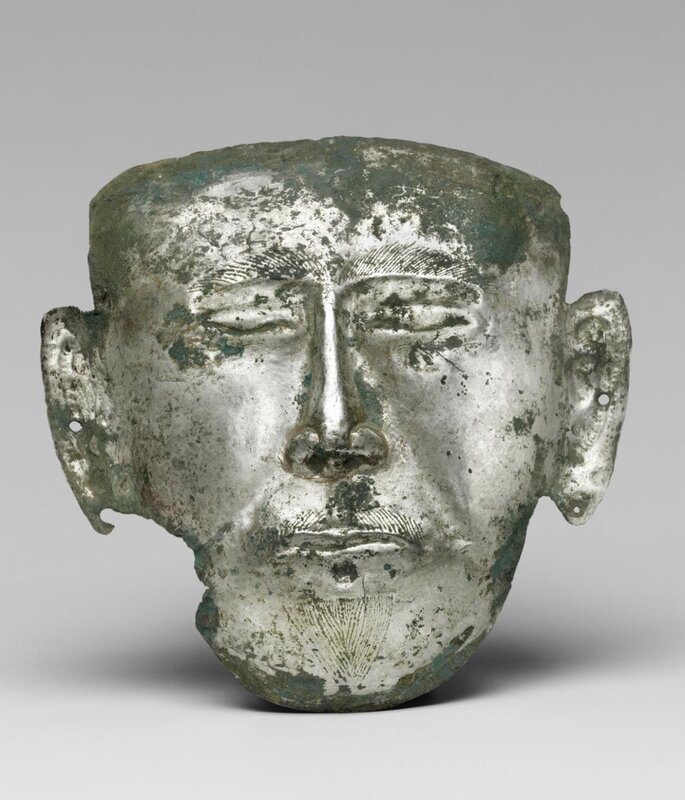Funerary Mask, Liao dynasty, Late 10th - early 12th century, Silver
Funerary Mask, Liao dynasty, Late 10th - early 12th century, Silver, 8 3/4 × 8 3/8 inches (22.2 × 21.3 cm), Purchased with funds contributed by Marguerite and Gerry Lenfest, 2012 (2012-53-1). © 2018 Philadelphia Museum of Art
This mask depicts the serene face of a male who was part of the Khitan tribe, a people who ruled north China over a thousand years ago, during the Liao dynasty (907–1125). Placing a metal mask on the face of the deceased was a unique tradition of the nomadic Khitan; they buried their high-ranking men and women with various amounts of metal body attire such as a mask like this one for the face and a suit “woven” from wire for the body. The masks were highly personalized and fashioned in a variety of shapes and sizes, the type of metal depending on the status of the wearer. The simplest were made of thinly hammered bronze while those of silver and, in rare cases, gold were reserved for the elite. This example is formed from silver, with carefully modeled features and facial details delicately incised on the surface. The ears are pierced and were probably once adorned with earrings, a custom practiced by both male and female Khitan.

/https%3A%2F%2Fprofilepics.canalblog.com%2Fprofilepics%2F1%2F0%2F100183.jpg)
/https%3A%2F%2Fstorage.canalblog.com%2F03%2F02%2F119589%2F96711876_o.jpg)
/https%3A%2F%2Fstorage.canalblog.com%2F11%2F31%2F119589%2F94773502_o.jpg)
/https%3A%2F%2Fstorage.canalblog.com%2F20%2F83%2F119589%2F94772815_o.jpg)
/https%3A%2F%2Fstorage.canalblog.com%2F26%2F72%2F119589%2F75604929_o.jpg)
/https%3A%2F%2Fstorage.canalblog.com%2F59%2F60%2F119589%2F26458628_o.jpg)



/image%2F1371349%2F20240408%2Fob_bbb9e7_2024-nyr-22642-0884-000-a-silver-hexal.jpg)
/image%2F1371349%2F20240407%2Fob_4b2318_2024-nyr-22642-0882-000-a-pair-of-silv.jpg)
/image%2F1371349%2F20240229%2Fob_c650f1_425344618-1624788374957842-51266877057.jpg)
/http%3A%2F%2Fstorage.canalblog.com%2F70%2F03%2F119589%2F129837682_o.jpg)